Vacuum tube rogue gallery
WA2MZE's Vacuum Tube Rogue Gallery
UV201
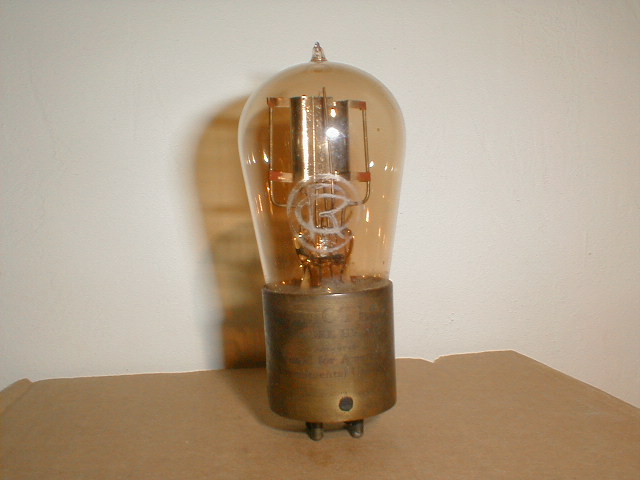 The UV201 was a battery operated high vacuum triode detector designed for use as an amplifier or detector. It was introduced in 1920. This particular tube appears to have been made before the end of 1921 as it has the original 'RCA' emblem and an exhaust tip. The marking on the brass base is still legible even though it is covered with 80 years worth of grime. This is currently the oldest tube in my collection, it is still in working order.
The UV201 was a battery operated high vacuum triode detector designed for use as an amplifier or detector. It was introduced in 1920. This particular tube appears to have been made before the end of 1921 as it has the original 'RCA' emblem and an exhaust tip. The marking on the brass base is still legible even though it is covered with 80 years worth of grime. This is currently the oldest tube in my collection, it is still in working order.
UV201A
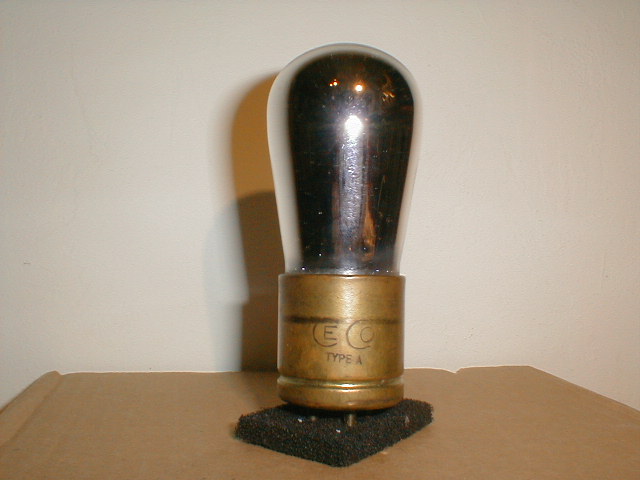 The UV201A was an improved version of the UV201, requiring 1/4 the filament current. This particular tube was made by the CeCo company, and was a direct replacement for the Radiotron UV201A. This tube is burnt out, the filament no longer lights.
The UV201A was an improved version of the UV201, requiring 1/4 the filament current. This particular tube was made by the CeCo company, and was a direct replacement for the Radiotron UV201A. This tube is burnt out, the filament no longer lights.
UX210
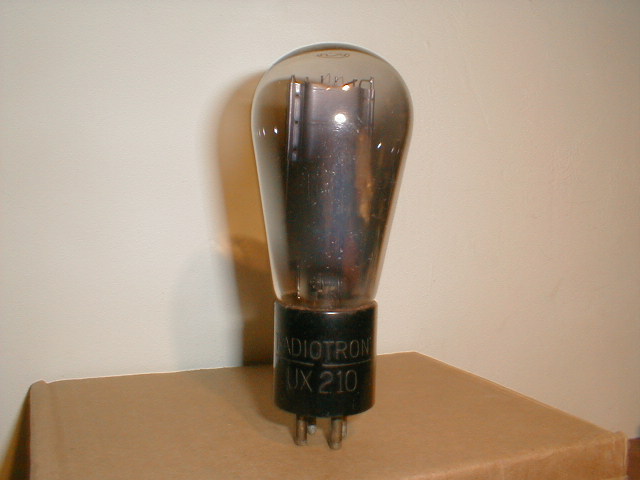 The UX210 was one of the first power tubes available to amateur radio. It superceded the type UV202. Both of these tubes had 7.5 volt filaments and operated at plate voltages up to about 450 volts. The UX210 was the grand daddy of the types 10Y and 801A triodes, as well as the 812 and 811 tubes. This particular tube has an open filament and no longer lights.
The UX210 was one of the first power tubes available to amateur radio. It superceded the type UV202. Both of these tubes had 7.5 volt filaments and operated at plate voltages up to about 450 volts. The UX210 was the grand daddy of the types 10Y and 801A triodes, as well as the 812 and 811 tubes. This particular tube has an open filament and no longer lights.
UX866
 The UX866 was a half wave mercury vapor rectifier tube. It is the grand daddy of the modern 866A. Notice the lack of the round filament shield below the plate that the modern version has. This tube still lights and is full of mercury.
The UX866 was a half wave mercury vapor rectifier tube. It is the grand daddy of the modern 866A. Notice the lack of the round filament shield below the plate that the modern version has. This tube still lights and is full of mercury.
UX230
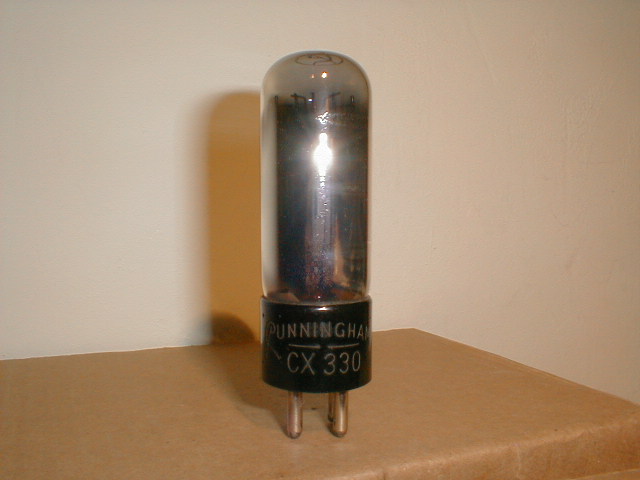 The UX230 was a battery operated triode used in receivers. It was the forerunner of the type '30 and in octal based format the 1H4G. This tube was very briefly made in a tubular bulb form, and was then the ST12 bulb style. The tubular bulb dates this tube as prior to 1930. This tube appears to be in unused condition.
The UX230 was a battery operated triode used in receivers. It was the forerunner of the type '30 and in octal based format the 1H4G. This tube was very briefly made in a tubular bulb form, and was then the ST12 bulb style. The tubular bulb dates this tube as prior to 1930. This tube appears to be in unused condition.
UX171
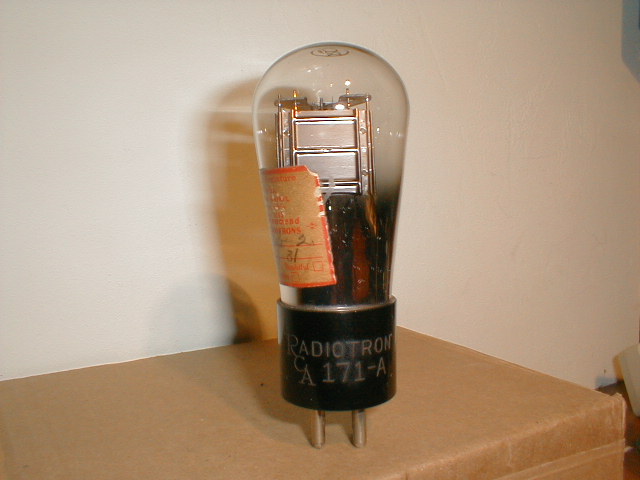 The UX171 was a triode power amplifier used in receivers. It was designed for use in battery sets, but was actually used in many of the first AC operated neutradyne sets. The tube had a "M" shaped 5 volt filament. This particular tube still lights.
The UX171 was a triode power amplifier used in receivers. It was designed for use in battery sets, but was actually used in many of the first AC operated neutradyne sets. The tube had a "M" shaped 5 volt filament. This particular tube still lights.
UX226
 The UX226 was designed to be used as an RF or AF amplifier in AC operated receivers. It had a 1.5 volt filament. The low voltage filament was less prone to produce hum when operated on AC then the 5 volt filament used on the type UX201 tubes. The UX226 is very similar to the type UX201 except for the filament rating. The tube could not be used as a detector, so the type UX227 heater - cathode design was introduced. This particular tube is in unused condition.
The UX226 was designed to be used as an RF or AF amplifier in AC operated receivers. It had a 1.5 volt filament. The low voltage filament was less prone to produce hum when operated on AC then the 5 volt filament used on the type UX201 tubes. The UX226 is very similar to the type UX201 except for the filament rating. The tube could not be used as a detector, so the type UX227 heater - cathode design was introduced. This particular tube is in unused condition.
UY227
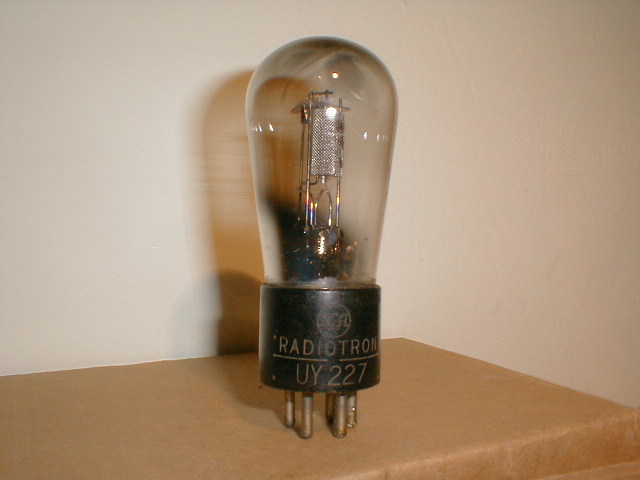 The UY227 was designed for detector service in AC operated receivers. It had a 2.5 volt heater. It was one of the first indirectly heated cathode tubes ever made (BUT NOT the FIRST!). This particular tube still lights.
The UY227 was designed for detector service in AC operated receivers. It had a 2.5 volt heater. It was one of the first indirectly heated cathode tubes ever made (BUT NOT the FIRST!). This particular tube still lights.
UX224
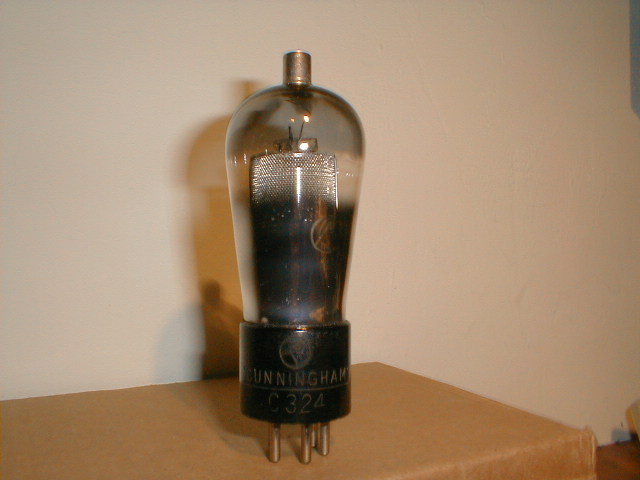 The UX224 was one of the first RF tetrode tubes ever made. Tetrode tubes provided higher amplification factors than triodes and could be used as an RF amplifiers without neturalization. They were also used as mixers and detectors. Tetrodes were later replaced by pentode types.
The UX224 was one of the first RF tetrode tubes ever made. Tetrode tubes provided higher amplification factors than triodes and could be used as an RF amplifiers without neturalization. They were also used as mixers and detectors. Tetrodes were later replaced by pentode types.
TYPE 80
 The type 80 was a full wave rectifier. Introduced as the type UX280 it is the predecessor of several types including the 5Y3 and 5Y4 types. The type 80 has been in production since 1927 making it the oldest tube in continuous production. In it's final form it was made in a 4 prong 'GT' bulb (really a 5Y3GT with a 4 prong base!). This tube is a modern version of the type 80, I'm still looking for a UX type for my collection.
The type 80 was a full wave rectifier. Introduced as the type UX280 it is the predecessor of several types including the 5Y3 and 5Y4 types. The type 80 has been in production since 1927 making it the oldest tube in continuous production. In it's final form it was made in a 4 prong 'GT' bulb (really a 5Y3GT with a 4 prong base!). This tube is a modern version of the type 80, I'm still looking for a UX type for my collection.
WE 717A
 This strange looking bottle was made by WE for the government. It was used in some of the AN/ARC-5 series VHF radios. The tube was actually a 6AK5 with an octal base!
This strange looking bottle was made by WE for the government. It was used in some of the AN/ARC-5 series VHF radios. The tube was actually a 6AK5 with an octal base!
815
 The 815 was one of the first dual beam power tubes designed for VHF push-pull power amplifiers. The 815 was usable up to about 200 MHz. It was followed by the septar based 829 and 832 bottles.
The 815 was one of the first dual beam power tubes designed for VHF push-pull power amplifiers. The 815 was usable up to about 200 MHz. It was followed by the septar based 829 and 832 bottles.
6E5 Eye tube
 The type 6E5 was a magic eye tuning indicator tube. It was made in both ST12 and 'GT' bulb styles. The type 1629 was similar but with an octal base and a 12 volt heater.
The type 6E5 was a magic eye tuning indicator tube. It was made in both ST12 and 'GT' bulb styles. The type 1629 was similar but with an octal base and a 12 volt heater.
CK722 TRANSISTOR!
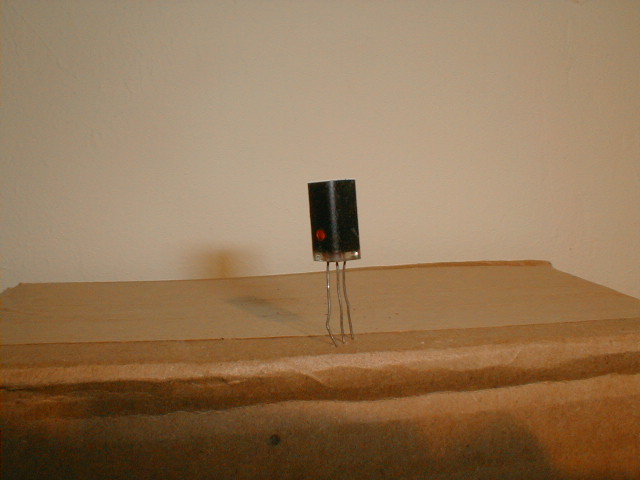 Thought I'd finish this page with one of the first transistors ever made. The CK722 was a PNP junction transistor used by many hams who wanted to fool around with the first transistors. It was useful only for audio work as it's cutoff frequency was about 20 KHz!
Thought I'd finish this page with one of the first transistors ever made. The CK722 was a PNP junction transistor used by many hams who wanted to fool around with the first transistors. It was useful only for audio work as it's cutoff frequency was about 20 KHz!

 The UV201 was a battery operated high vacuum triode detector designed for use as an amplifier or detector. It was introduced in 1920. This particular tube appears to have been made before the end of 1921 as it has the original 'RCA' emblem and an exhaust tip. The marking on the brass base is still legible even though it is covered with 80 years worth of grime. This is currently the oldest tube in my collection, it is still in working order.
The UV201 was a battery operated high vacuum triode detector designed for use as an amplifier or detector. It was introduced in 1920. This particular tube appears to have been made before the end of 1921 as it has the original 'RCA' emblem and an exhaust tip. The marking on the brass base is still legible even though it is covered with 80 years worth of grime. This is currently the oldest tube in my collection, it is still in working order.
 The UV201A was an improved version of the UV201, requiring 1/4 the filament current. This particular tube was made by the CeCo company, and was a direct replacement for the Radiotron UV201A. This tube is burnt out, the filament no longer lights.
The UV201A was an improved version of the UV201, requiring 1/4 the filament current. This particular tube was made by the CeCo company, and was a direct replacement for the Radiotron UV201A. This tube is burnt out, the filament no longer lights.











